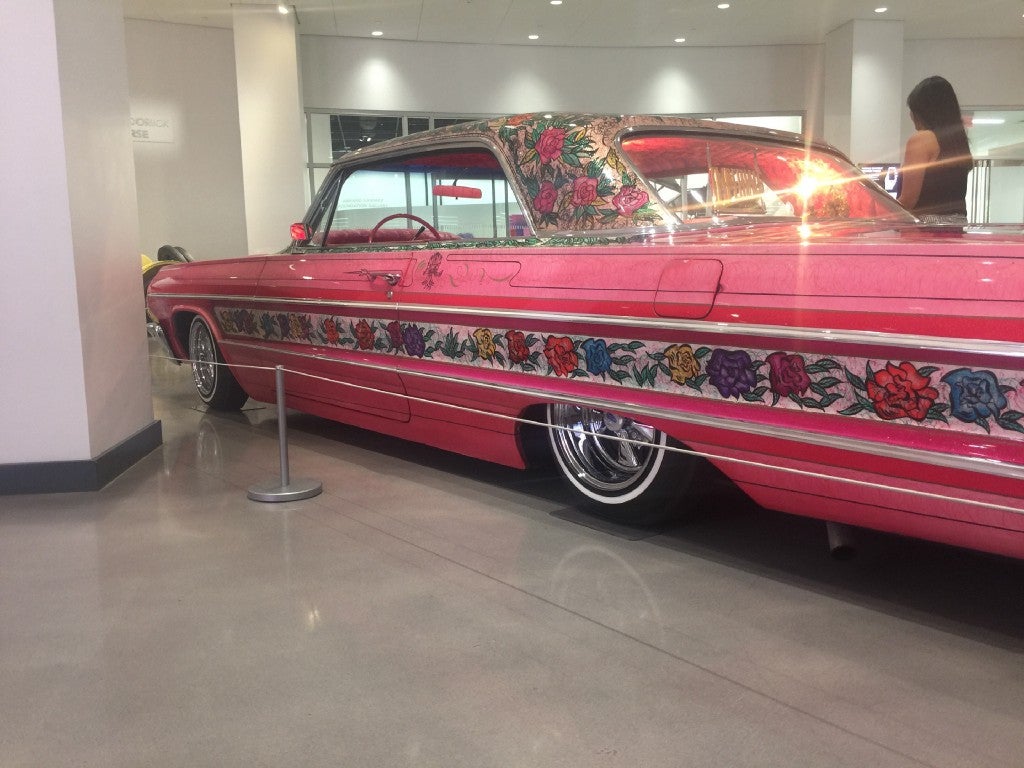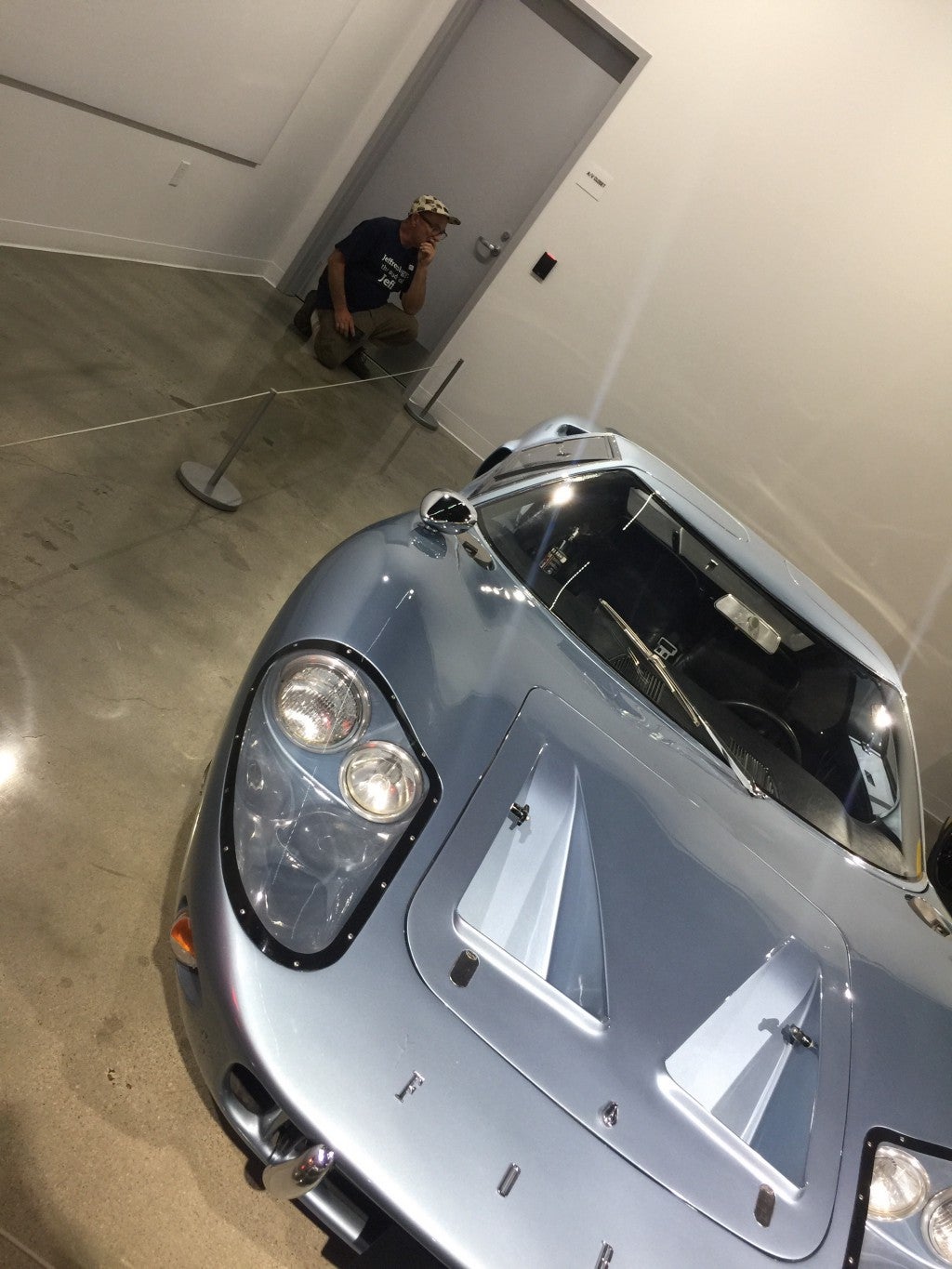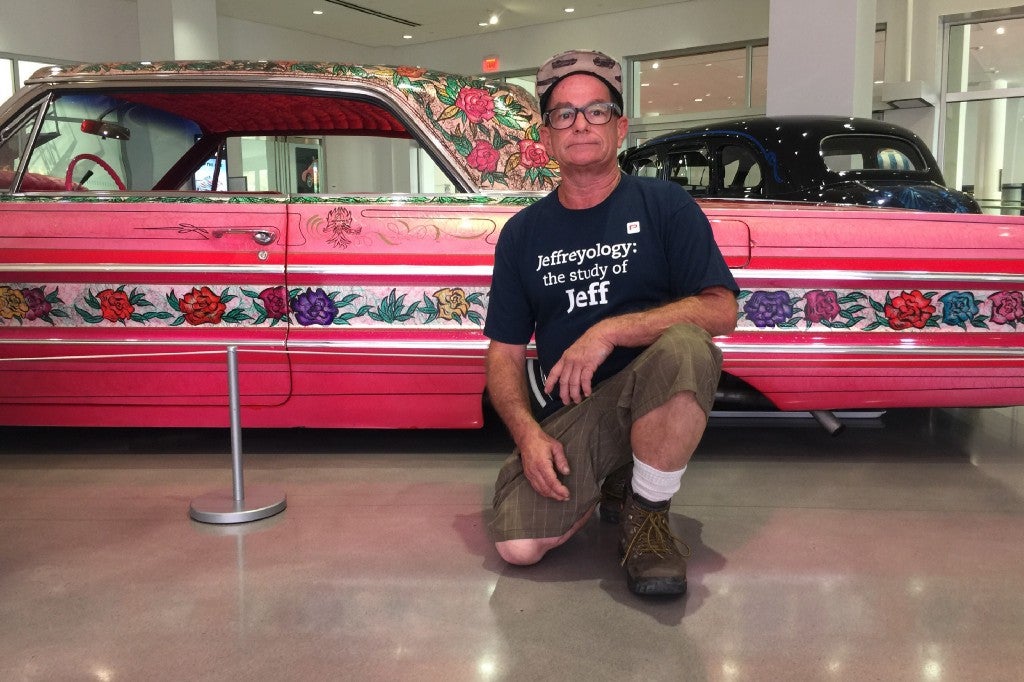My dad is a greasy gearhead with puffy oil-stained hands and loud work boots. He’s known to wear his knee-pads to the supermarket and yell, “Light it up!” if he sees a fellow gearhead driving a special car that he likes. When they oblige by revving their engine to flaunt their horsepower, he gets loud and demonstrative, more animated than his engineering-minded self usually allows. “That. Is. Sweet!” he yells. He’s also been known to offer them a “Bitchin!” or “Nice ride!” Or he’ll hit them with a congratulatory honk.
When my art class painted ceramic ties to give to our dads as Father’s Day gifts, I remember wishing I could draw flames, one of his favorite hot-rod motifs, because it seemed like the only way he would like it. He, of course, would’ve preferred a plastic diecast car or truck, for which he could create custom parts out of rubber, plastic and metal — at least for the models he’d actually remove from their “collectible” boxes. When it comes to cars, everything is collectible to my dad. Along with our garage being populated with at least seven “classics” — beat-up old cars he’s always in the process of restoring — my dad also hoards car-show programs and cardboard boxes that car parts once came in. Not to mention, the spare engines he lines various rooms in our house with.
How awful, then, that I’ve always played the part of the mechanic’s surly daughter, the one who ignores her dad’s car friends as they ash their Marlboro Reds over engines in the dry, Southern California heat. (We live in the San Fernando Valley, the hottest part of the greater Los Angeles area.) The one who refuses to work the brakes for him until he begs or promises something in return. The one who chastises him when a automobile-related project proves to be too challenging, teasing him about his abilities as he sulks in the front yard or mutters hateful self-talk about his own abilities and his “piece of shit cars.”
For much of my childhood, I groaned and yawned and complained when he’d point out a car he liked or tried to teach me anything about it. That’s why he was shocked when, early last year, I invited him to go with me to the grand reopening of the Petersen Automotive Museum, the pre-eminent automobile museum in the country. Upon our entrance, we spotted an extremely rare Corvair prototype, a brand lost a long time ago thanks in part to Ralph Nader. “I have goosebumps,” he said as he backed away to view its frame from more of a distance. He was stunned by the presence of a car he hadn’t seen in decades, a deluxe model that had been unveiled at a car show he attended with his dad many years before but never went into production for the masses.
It was the happiest I’d ever seen him. It was also one of the first times I realized how much I am like him. I have favorites like he does. I research and archive like he does. I write lists like he does. I dream of color schemes and aesthetics like he does. I love my own shit like he loves his shit, and we know we’re great at what we love because of how much we love it.
The moment wasn’t fleeting: My dad still regularly references that Corvair as a testament to his unwavering belief in a higher power.
And so, last Saturday, we went back to the Petersen Museum.
My dad picks me up in Thai Town, where I’m grabbing us doughnuts, his favorite breakfast, from California Donuts before their lines become insufferably long. We drive past a couple of his recent job sites in Hollywood — bars and nightclubs like the ones he used to drop me off at before rideshare services were a part of my life and where he fabricates custom metal signs and copper countertops, among other general construction work. All of which is to say the man knows his metal. So as we approach the museum and its unique architectural facade, where layered, ribbons of metal wrap around the bright, red building, he’s quick to admire the handiwork: “Look at that stainless steel poking up! Such a bitchin’ building!”
While killing time before the museum opens, we peer into the low-rider exhibit on the museum’s ground floor. It’s of particular interest to my dad since his brother Jay, who had about 15 different lowrider cars in the 1970s and 1980s, claimed to be the first guy in the Valley to “slam a Bug” — i.e., to lower the suspension of his VW, meaning he dropped the Bug from where it usually sits so that it rides much closer to the ground. The result, of course, being improved aerodynamics, handling and looks.
“He would lower anything,” my dad explains. “That’s why my dad called him ‘The Butcher.’ I remember my brother’s first car was a 1958 Buick, an immaculate car that my dad had got from its original owner — the type of car that could eventually generate money for him if it was kept stock — and my brother just immediately cut it up. Bam!”
At this time, my dad, his brother and their dad all read from the same monthly issue of Hot Rod magazine, the publication for hot-rod lovers founded in 1948 by Robert E. Petersen, the same man who created the museum.
Once the museum opens, we almost immediately spot another car that has special significance for my dad: The Gypsy Rose. Or at least a perfect remake of the original Gypsy Rose, the car known to many as the most influential custom in the world. It’s painted in layers of various pinks, topped with a stained glass-style roof and lined with a hot pink fur interior. The back seat is even complete with a cocktail bar. Jesse Valadez, a Mexican-American immigrant growing up in East L.A., was the man behind the original Gypsy Rose. He fashioned the car as an homage to the burlesque singer Gypsy Rose Lee, which explains why it’s stuffed with glamour.

As a kid, my dad saw the Gypsy Rose win contests across Southern California. It’s now registered as a historic vehicle. “Well, would you look at that? This isn’t just car history, it’s L.A. history and it’s Valley history. Low riders like this, even if they didn’t start in the Valley, were here riding and getting worked on,” he says.
He’s right. Valadez brought it to Walter Prey at Carter Pro Paint on Burbank Boulevard in Van Nuys to be outfitted in a style that still inspires car owners today. “This is the kind of car my brother put me onto,” my dad explains. “My brother was one of the Valley’s only white lowriders, if not its only white lowrider. He said in the high school dynamics of his day, he either had to be a surfer or a lowrider, and that the beach was too far and the gas too expensive to bother trying the first one.”
“Gosh, this place gets me fired up,” he continues. “This shit is my whole life. I wish I could live here.”
We see a Ford GT from 1967 that he’s working on a model of back at home, and he’s “stoked.” We check out a history of the motorcycle and a tribute to the Ferrari before poring over a multigenerational retrospective of the Bugatti family’s history of design. “That car looks like it’s going 100 miles an hour even when it’s there standing still,” my dad gushes.

Before we leave, we spend some time in the L.A. history section and glean some quick facts: Los Angeles Motordome, the world’s first wooden speedway, was constructed in Playa del Rey in 1910 (“Wow, 19-fucking-10!”). The W.C. Hendrie Rubber Company became the first tire manufacturer in Southern California when it opened in Torrance in 1913 (“Gotta have tires!”). The Beverly Hills Speedway was the first American track with turns mathematically optimized for high-speed racing when it opened in 1919 (“That means it had banked turns, a slope to those curves!”). And most notably, in 1943, L.A. suffered its first severe smog event; at the time, Angelenos believed it was a Japanese chemical attack (“I guess there’s always been scared, hateful fucks quick to blame others for their own bullshit!”).
Driving home, my dad stops at 7-Eleven to get a Dr Pepper. “You want a Rockstar Energy Drink?” he asks. My dad has been talking to me about energy drinks, a consumer novelty I’ve never been particularly into, for years because energy drinks have long sponsored automotive races and events. But before I can even answer, I see him shaking his head.
“Nah, that’s bro-hoe shit.”
Bro-hoes are Valley girls who go to the desert and ride. They love Rockstar. And Monster. And Red Bull. And likely wear each brand’s apparel. They have gauge earrings and still swear by the cultural significance of Happy Bunny. They roll blunts and tan while their dads or boyfriends — or sometimes their dads and boyfriends together — work on cars. They ask questions about horsepower like they give a fuck and have dated at least one opiate addict in their young lives. They’re the daughters of my dad’s friends, the gearheads who I always complained about hearing in the driveway through the front window to my room, talking about engines and old friends I didn’t know. They’re the girls I never wanted to seem like, for whatever judgmental, classist, ethnocentric reason or another.
My dad promises to get me an “artisanal water,” instead. “Fiji? “Smartwater? They’ve got Evian. Do you like Evian?” he asks me.
He brings me a Pellegrino but also offers me a swig of his Dr Pepper. I take it, and we get back on the road, cruising down the 170, L.A.’s most underrated freeway. “Going the Distance” by Cake comes on the radio, and he blasts it.
Reluctantly crouched at the starting line, engines pumping and thumping in time.
At that moment, the song felt like an appropriate anthem. Engines pumping and thumping are his shit. This is what he grew up doing. This is his connection to his family. This is what he knows he excels at. This is one part of life, amidst all of its unexpected complications and wrong turns, where he always feels in control. My dad’s unending knowledge of everything related to motors and wheels is what he likes the most about himself.
“If I could start my day like that every day, I’d never have bad days,” he says to me as the morning comes to an end.
Honestly, I feel the exact same way.

